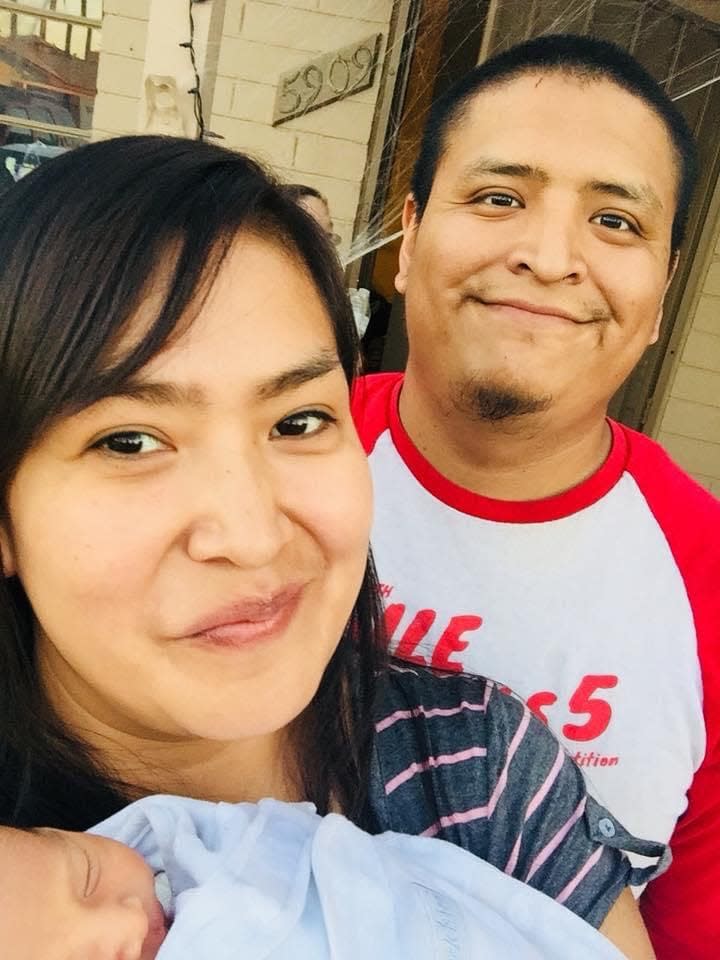'He was worth looking for': Sister of slain Diné man says Phoenix police did little to find him
The last day Kaylene Tsinnijinnie spoke to her brother and Laveen resident Jerole Tsinnijinnie was on New Year's Day 2020.
Jerole’s family did not know his whereabouts until last month after DNA testing matched him with a human skull found in January by a hiker at the South Mountain Park and Preserve in Phoenix.
Police ruled his death a homicide after finding what they called blunt force trauma on the skull, which was located near South Central Avenue and West Las Ramadas Drive.
The length of time his remains were on park grounds is unknown. And though Jerole, 28, was an avid hiker, the mystery behind his disappearance leads Kaylene, 34, to question whether he was killed there or elsewhere. She wonders whether the brother she remembers as a friendly, law-abiding family man would still be alive if police had just given his case more attention from the onset.
According to Kaylene, a Salt Lake City resident, a Phoenix police missing persons detective told her that because Jerole was not diagnosed with disabilities his disappearance was not a priority, leaving his family to mount an independent search.
"We had to do everything on our own. Nobody had this ability to think, to believe us that he was a great person. But he was worth looking for. He was worth finding. He was worth asking questions for," Kaylene said about the investigation into his disappearance in an interview with The Arizona Republic. "There's just a lot of possibilities and a lot of ways that you can get answers and I just didn't like that they didn’t."
In response to Kaylene's concerns, Phoenix police spokesperson Sgt. Robert Scherer told The Republic the investigation into Jerole's disappearance and death remained ongoing and declined to answer case-specific questions.

'The help we need'
Kaylene said that Jerole’s family — wife and four children — ventured out to different homeless shelters and encampments because police refused to search for him in those places.
And after authorities made a composite sketch based on the skull recovered at South Mountain Park, it was Kaylene who phoned investigators inquiring whether the illustration was of her brother, as it would prove to be.
Police said the sketch was of a man either white or Hispanic. This puzzled Kaylene since she and Jerole are Diné, or more commonly known as Navajo.
"They hadn't mentioned that he could possibly be Native American," she said. "Native American was out of the question."
The oversight frustrated Kaylene who pointed to a disparity in police investigations and media attention that favors missing white people over missing Indigenous people.
According to data from the National Missing and Unidentified Persons System, the counties in Arizona that appear to have the highest cases of missing Indigenous people are Maricopa and Navajo counties, previous Republic reporting shows.
This gap, however, is filled by efforts within the Indigenous community like sharing missing Indigenous people flyers on social media, she said.
Phillip Francisco, a former Navajo Nation police chief, previously told The Republic that it is more common for tribal agencies to work closely with family members of missing people, while federal agencies have been reluctant in the past to provide families with information on investigation processes.
"As Indigenous peoples, we have to look out for each other, we have to come together and we have to help each other in this way because we're not gonna get the help that we need," she said as she wept.
There were 9,575 missing Native American persons, according to the 2020 National Crime Information Center’s Missing Person and Unidentified Person Statistics report.
'He gave them all'
All police recovered on Jerole other than his skull were his keys and some of his clothes. Kaylene believes this means his discarded body may have been a victim of animal predation.The lack of information yielded so far makes the grisly details of Jerole’s end the more jarring, Kaylene said.
Her memories of her baby brother are filled with a Jerole that never grew angry and who loved Batman and online gaming. Jerole, Kaylene said, worked different trade jobs as a construction worker, a welder and a locksmith. He was committed to helping his family, she said.
Jerole went missing only a couple of months before his youngest child was born, Kaylene recalled.
"He was a great dad. He loved all of his kids. He gave them all of his time. He took very good care of them," she said.
Reach breaking news reporter Jose R. Gonzalez at jose.gonzalez@gannett.com or on Twitter @jrgzztx.
Support local journalism. Subscribe to azcentral.com today.
This article originally appeared on Arizona Republic: Sister of slain Navajo man says Phoenix police did little to find him

